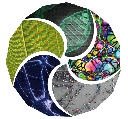In the last decades, astrocytes, a type of glial cells of the central nervous system, have been shown to detect and to regulate neuronal information processing at their fine ramifications that are in apposition to neuronal synapses. While neuronal excitability results from the propagation of electrical signals, astrocyte excitability results from cytosolic variations of Ca2+ concentration. Those cytoplasmic Ca2+ signals display different temporal and spatial characteristics, from sub-micrometer domains to waves propagating throughout the cell. It is not clear how these signals are transmitted to and integrated within an astrocyte and how it is propagated to other cell regions or to other cells. The localization of the main molecular actors, as well as the geometry of the system, such as the spatial organization of the calcium channels IP3R, are essential for understanding Ca2+ signal integration and propagation. However, most of those data still resist experimental quantification because of the small sizes and volumes at stake. Modeling is currently the only approach that can investigate those questions, thus enabling a better understanding on astrocyte-neuronal communication. Here, we defined a minimal model for Ca2+ dynamics and implemented it using various modeling methodologies (ODEs, Gillespie, PDMP, spatial stochastic particle-based) in order to understand its dynamics. We show that stochasticity is essential for spontaneous Ca2+ signals to emerge. The spatial stochastic particle-based model was best suited to investigate Ca2+ dynamics given the stochasticity inherent to the small sub-cellular volumes and low copy numbers expected in fine processes. In particular, our simulation results suggest that Ca2+ diffusion as well as the degree of IP3R clustering shape the temporal characteristics of Ca2+ signals. This is the first study to our knowledge to apply such stochastic spatial particle-based models to Ca2+ dynamics in astrocytes.

 PDF version
PDF version
